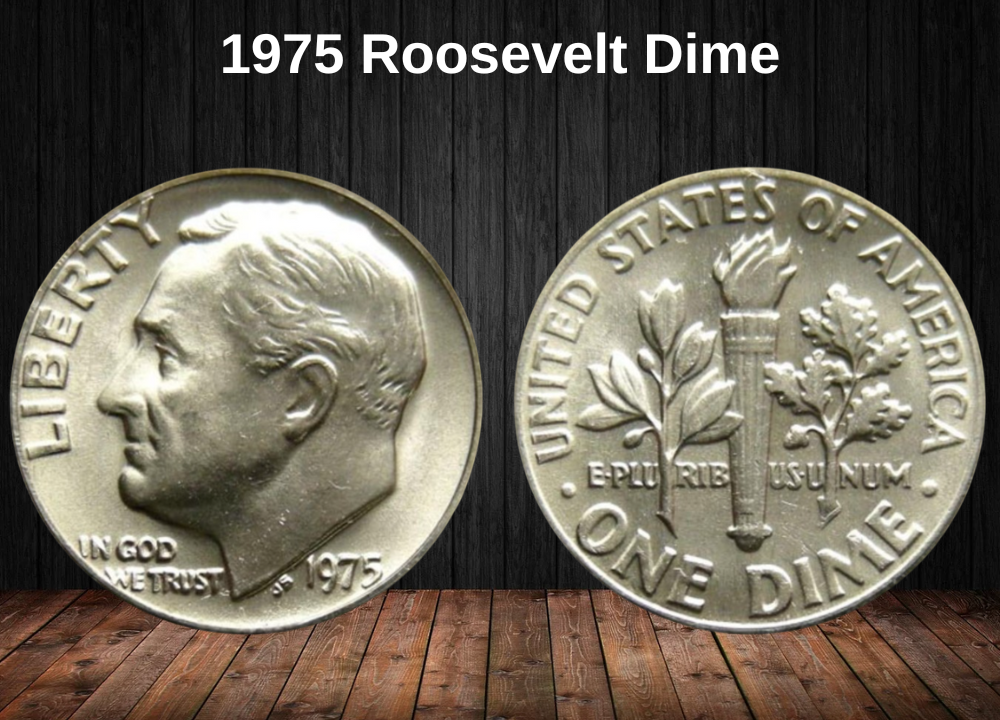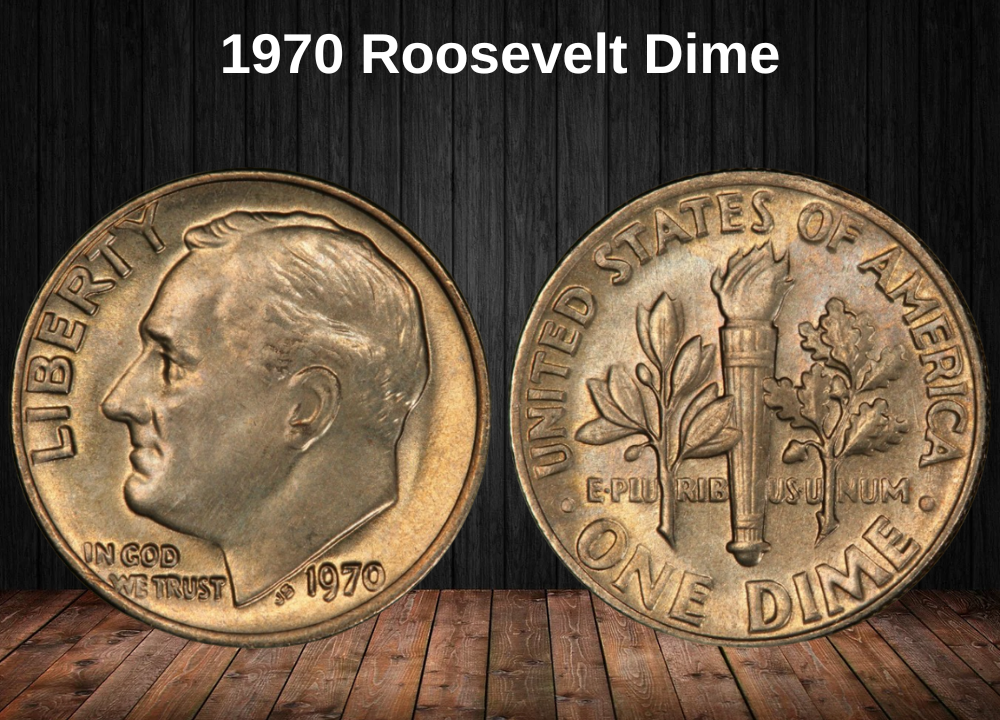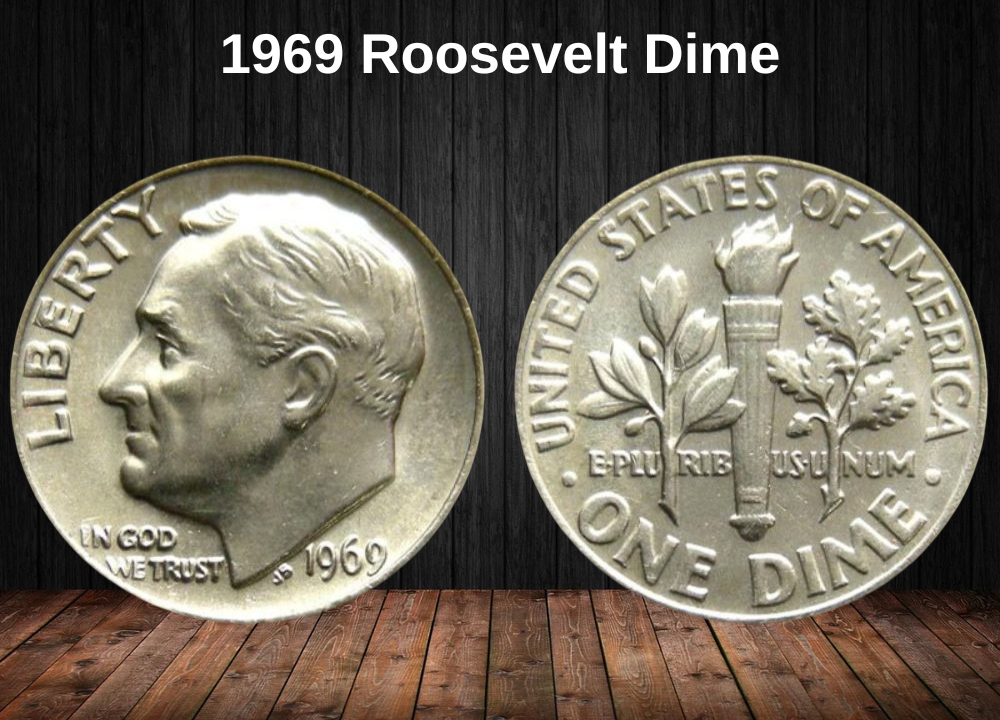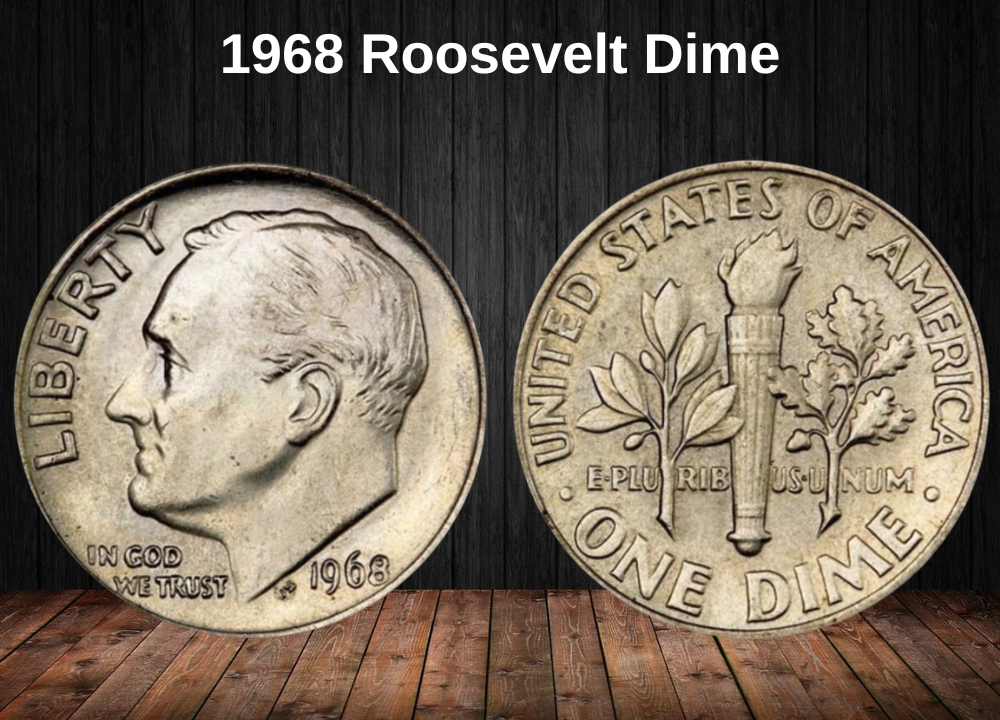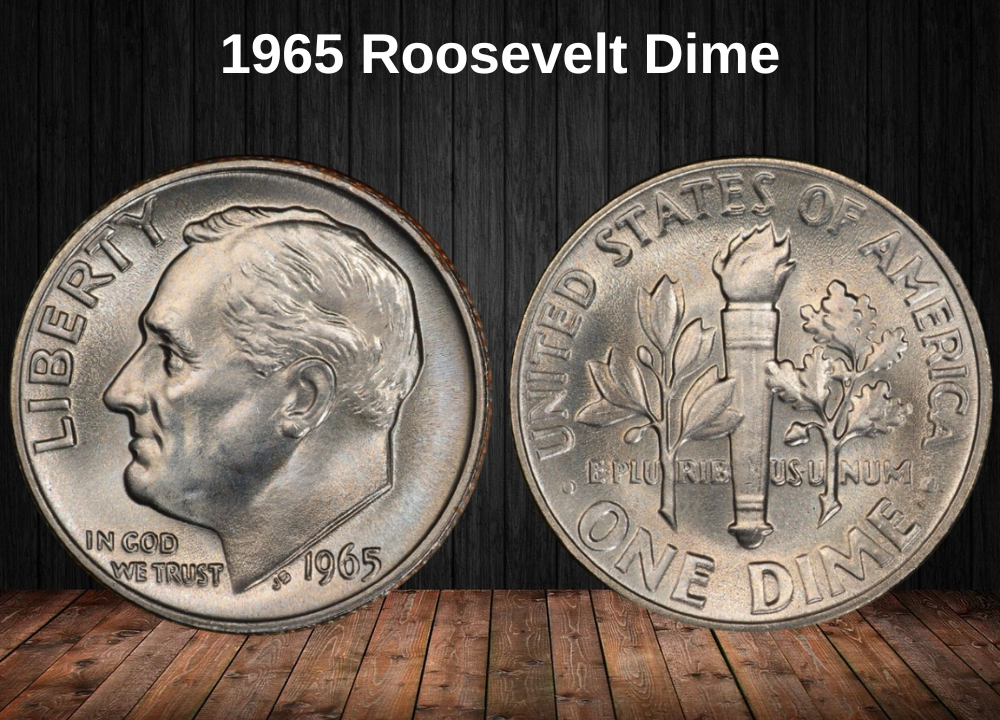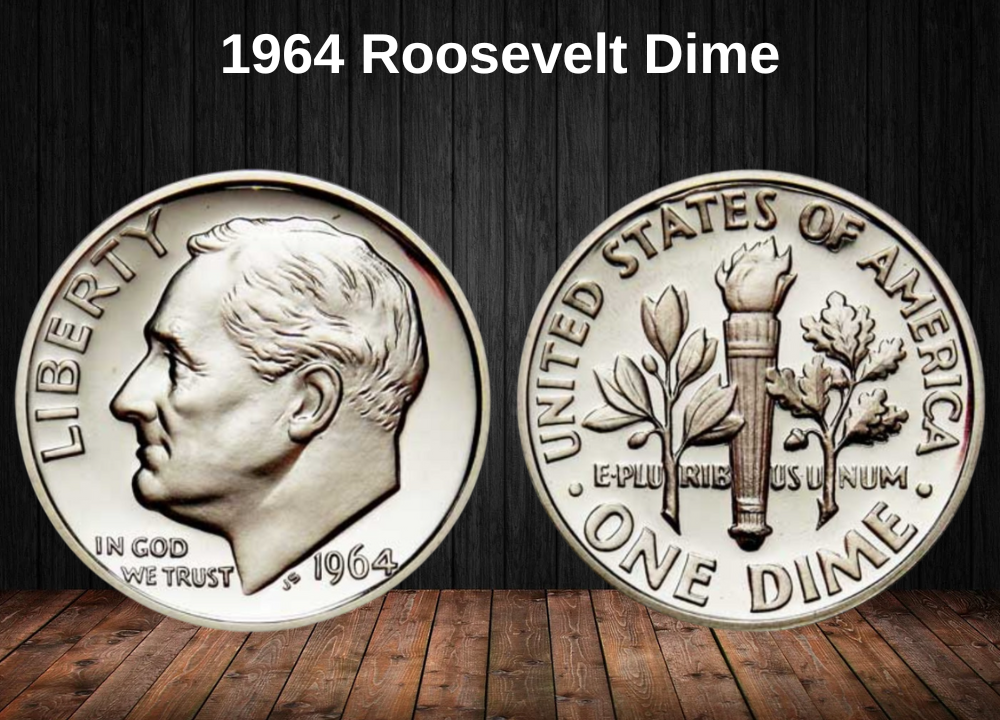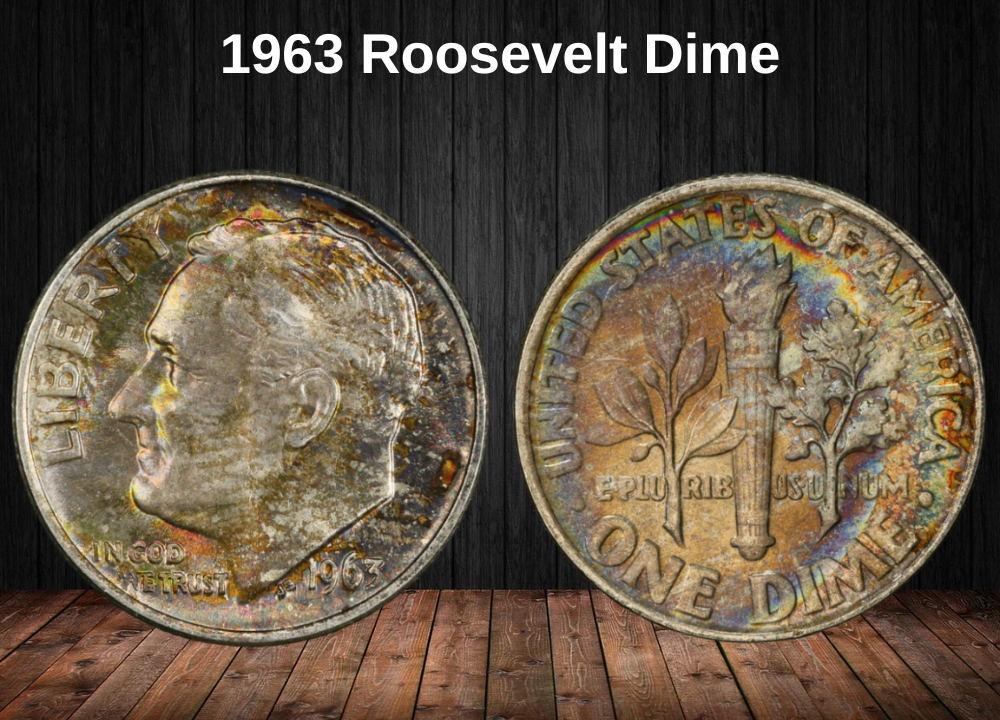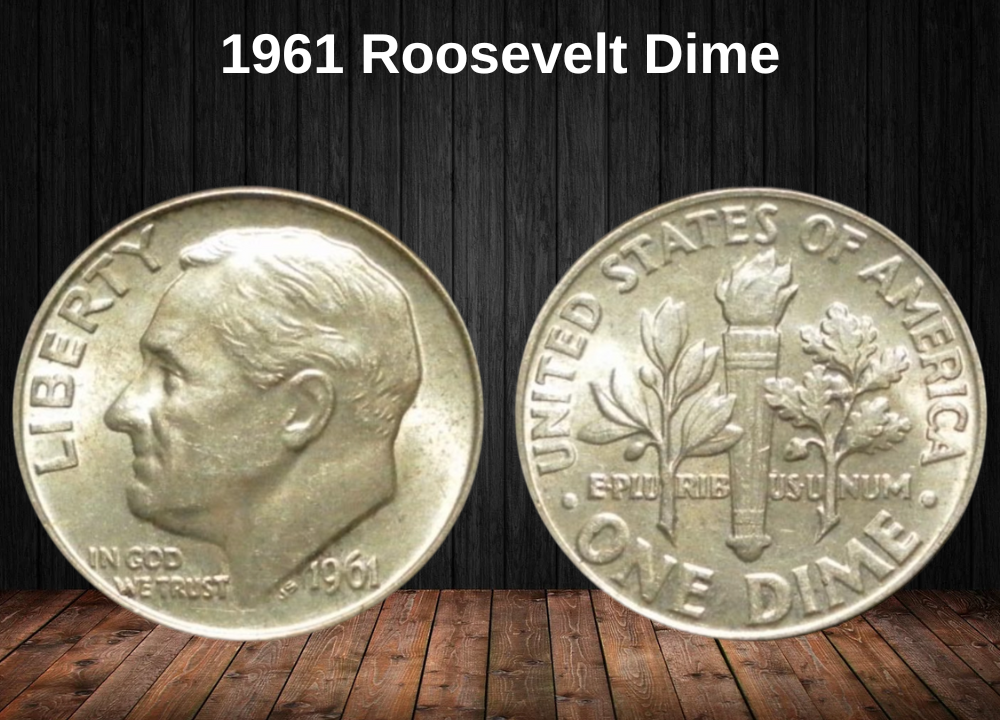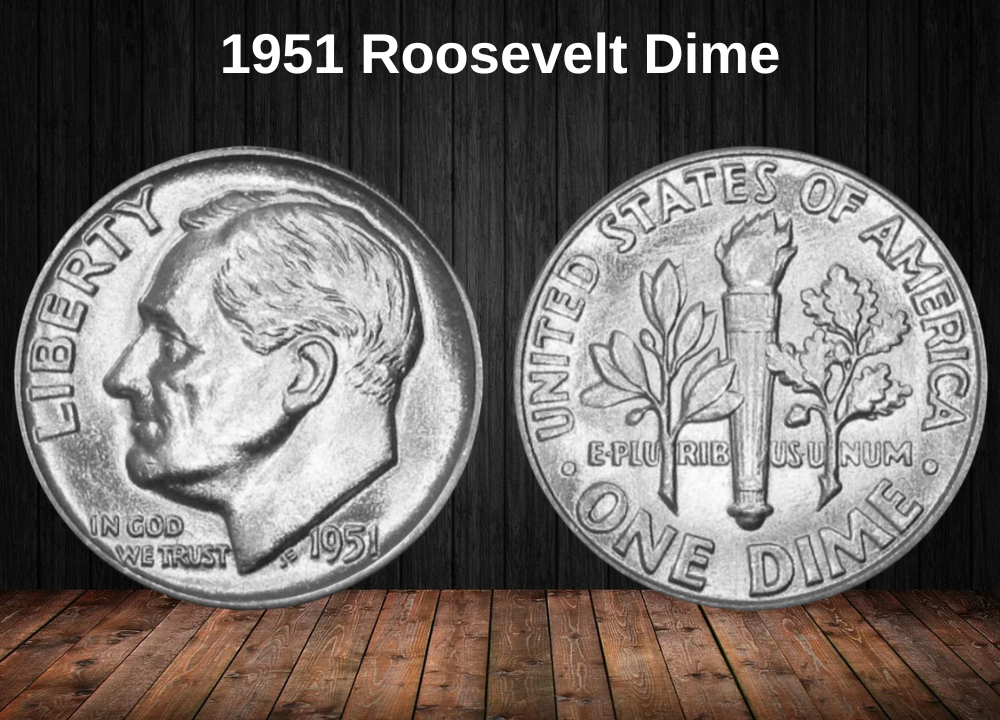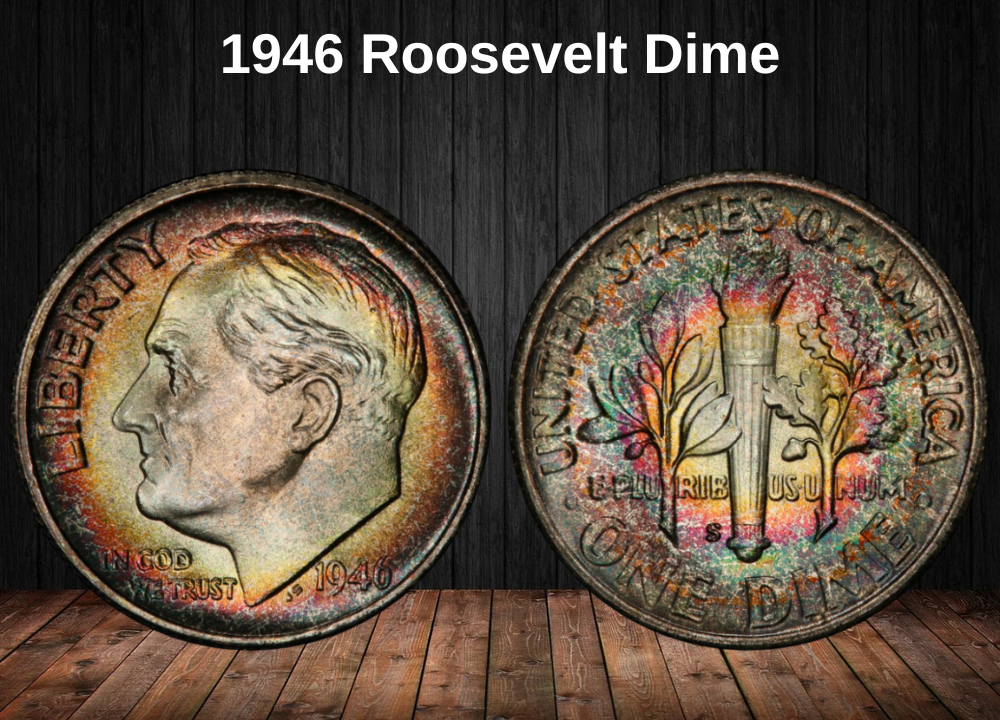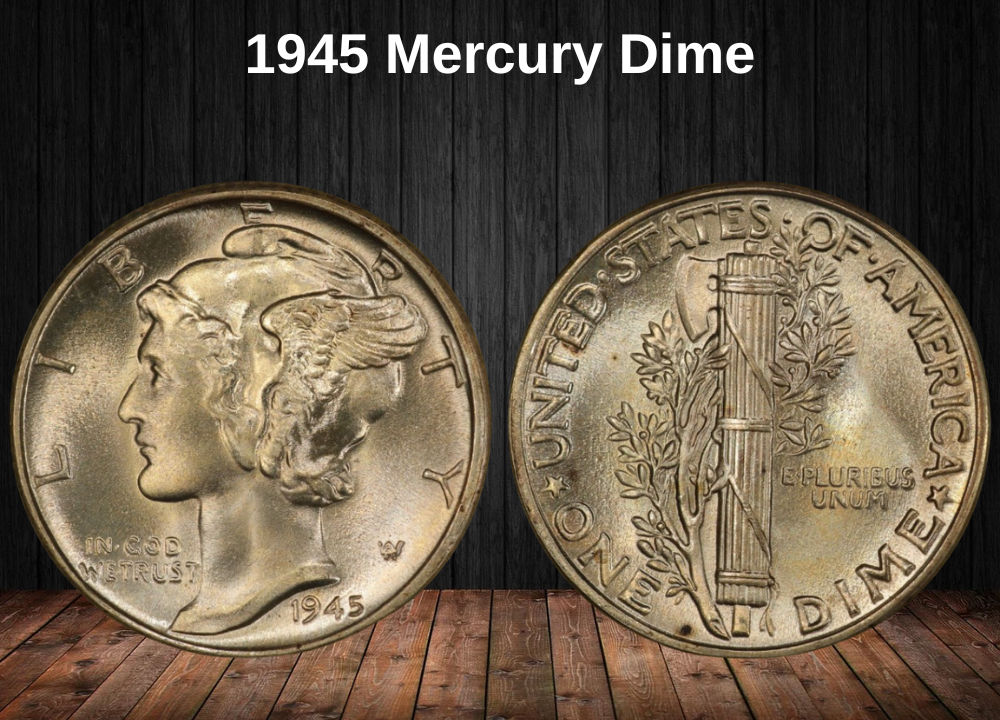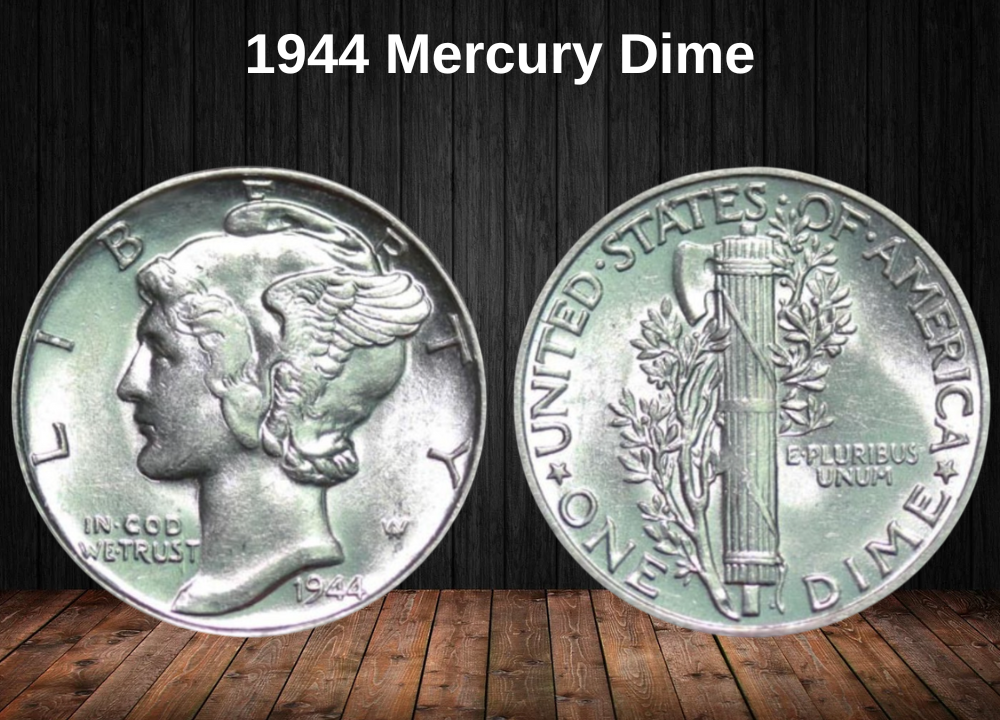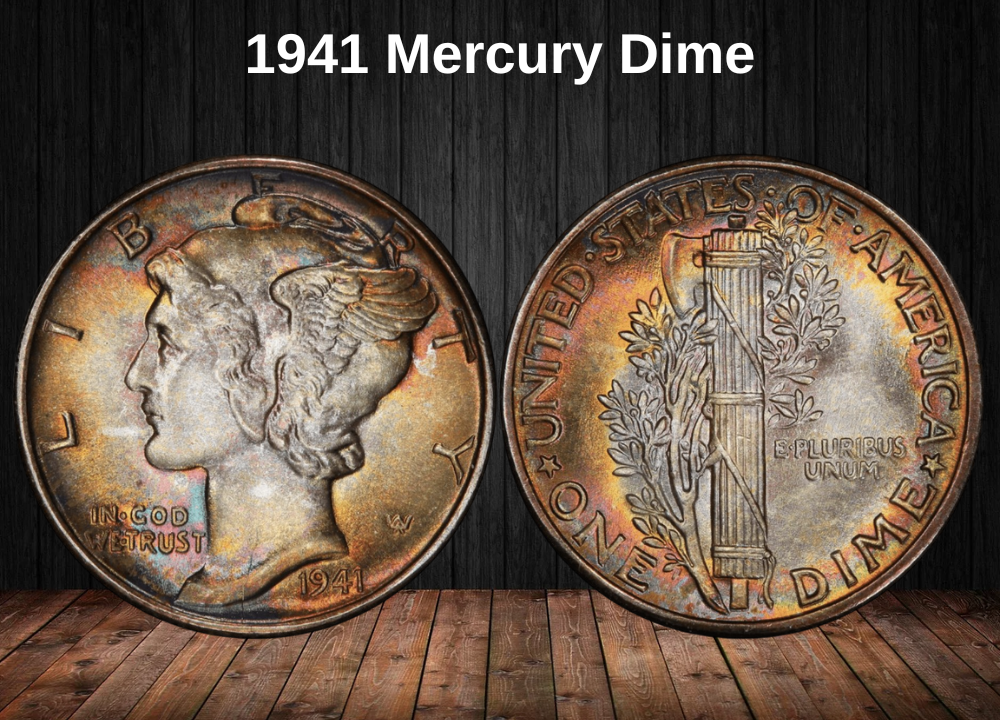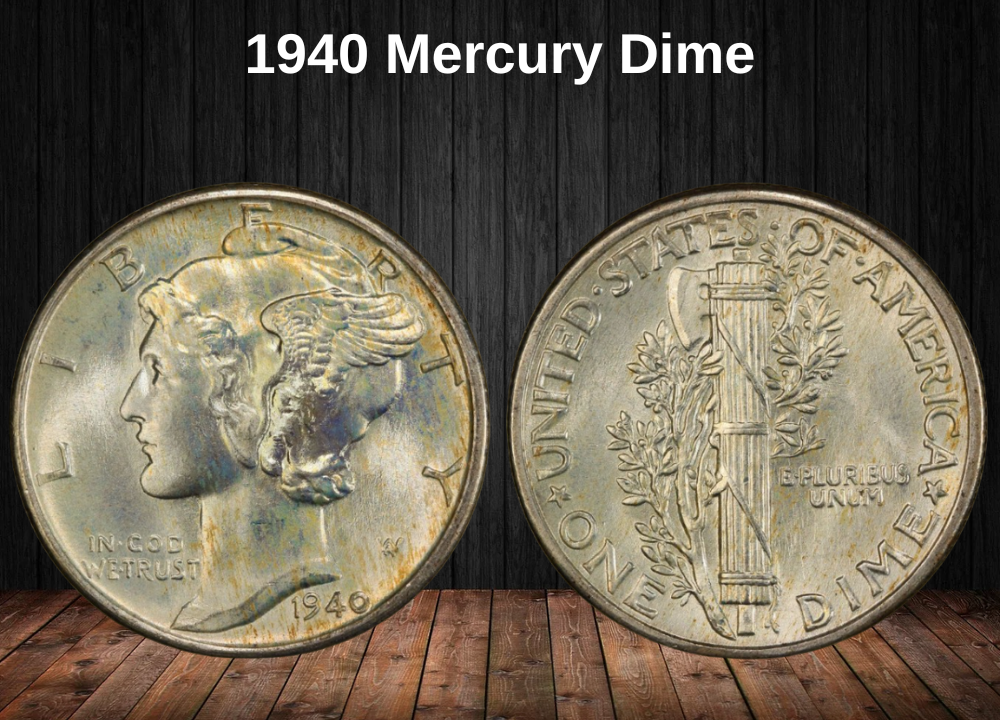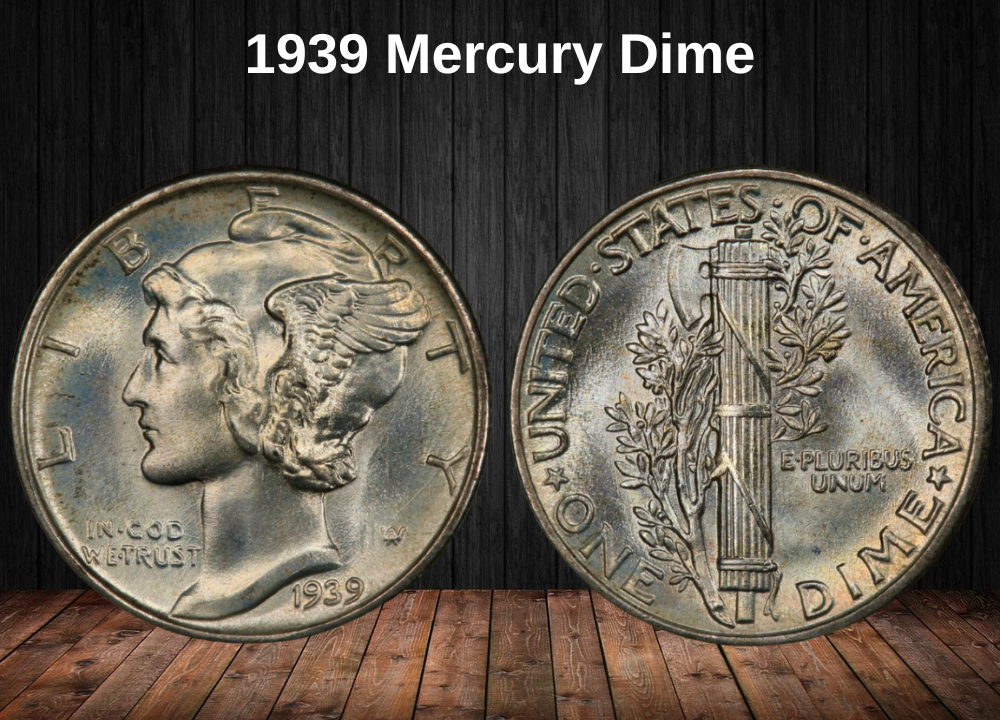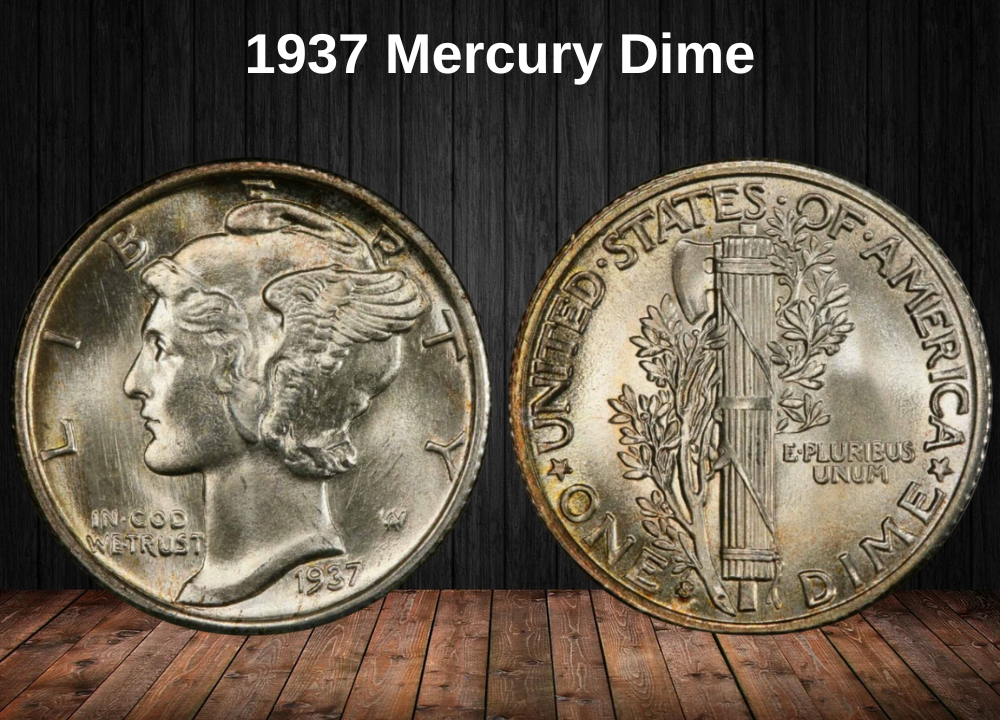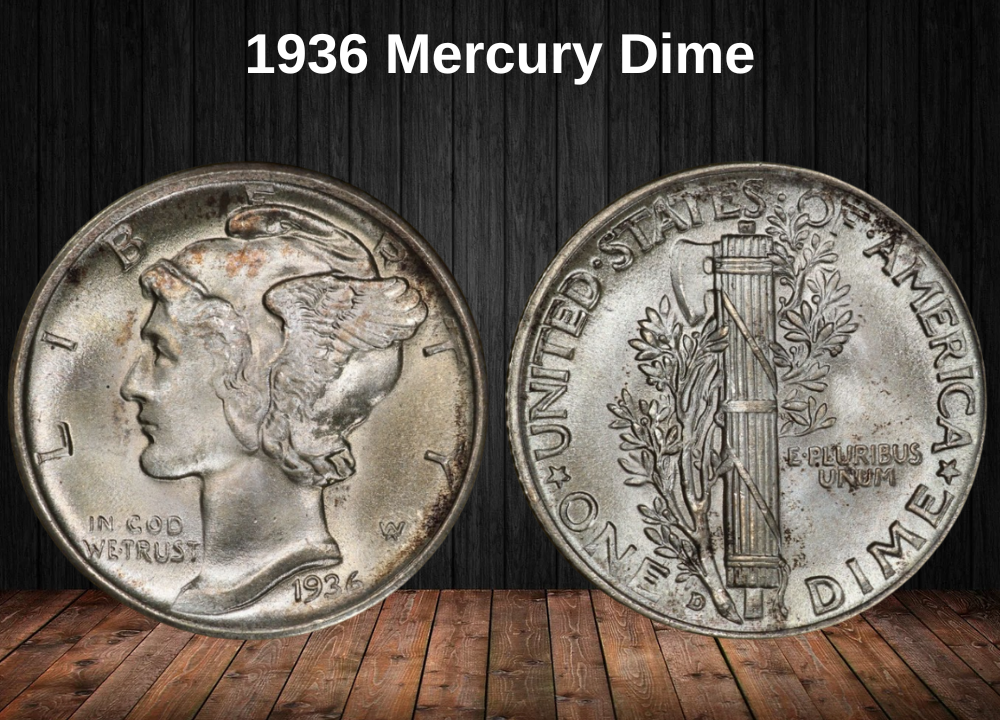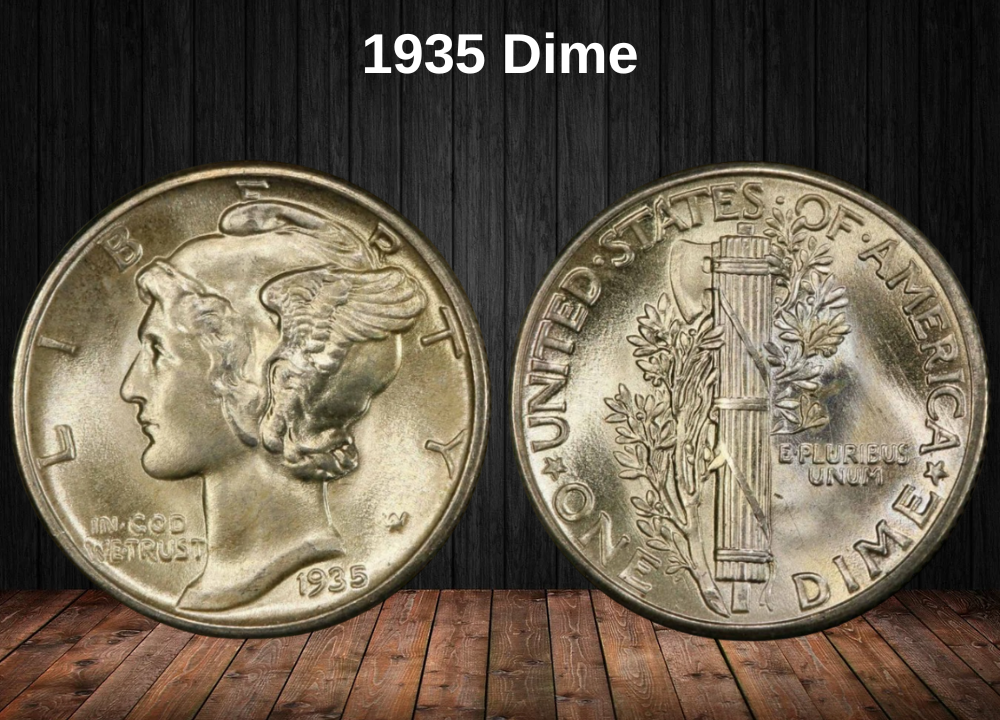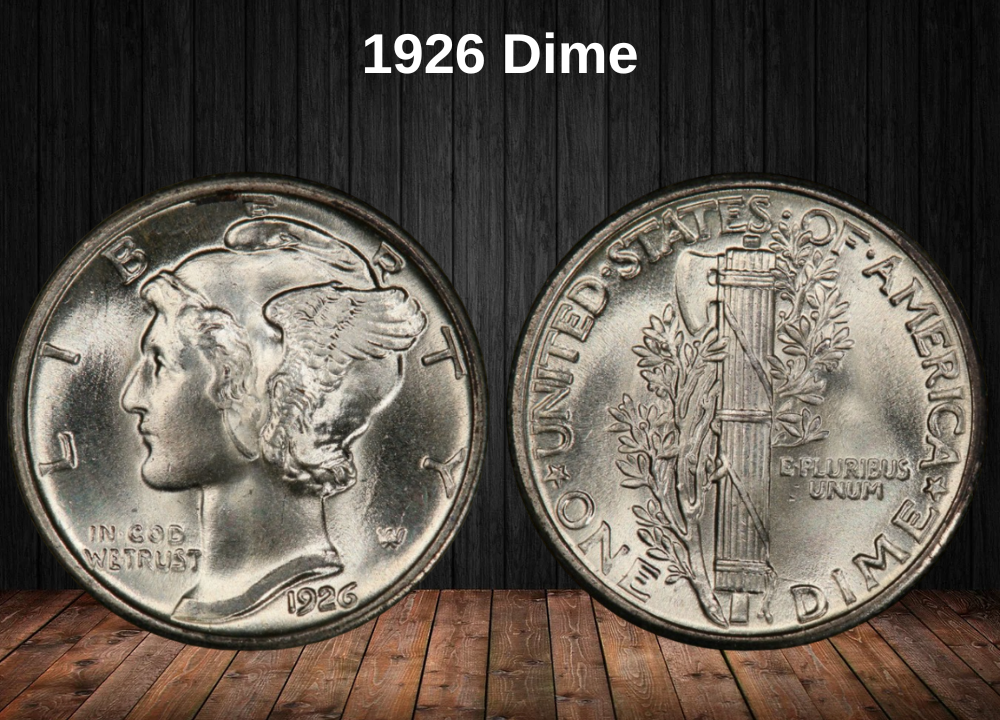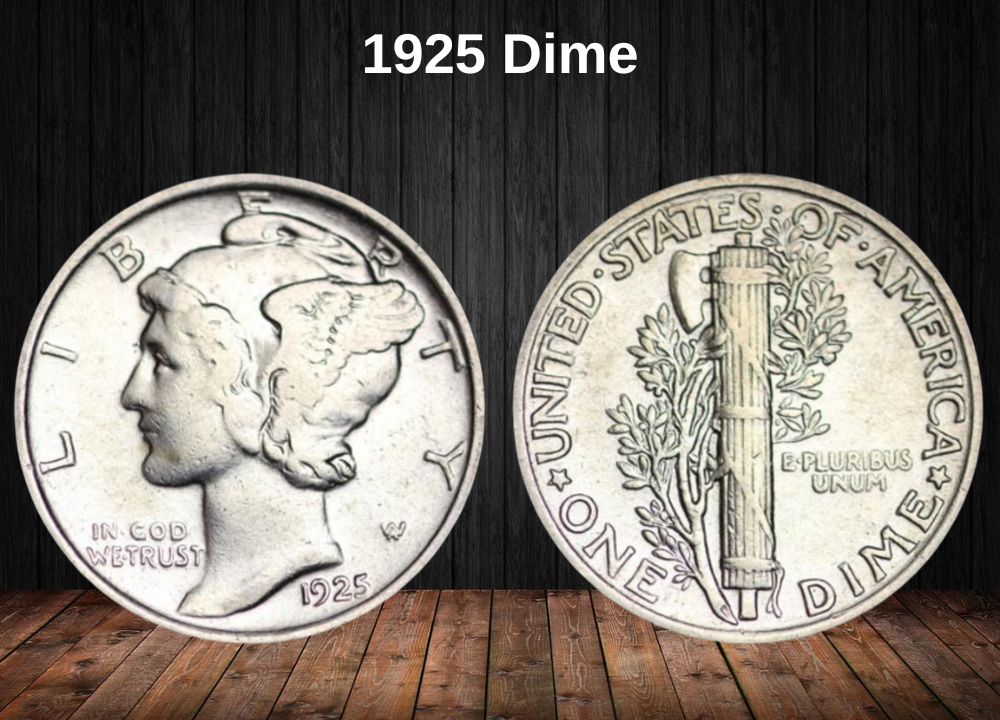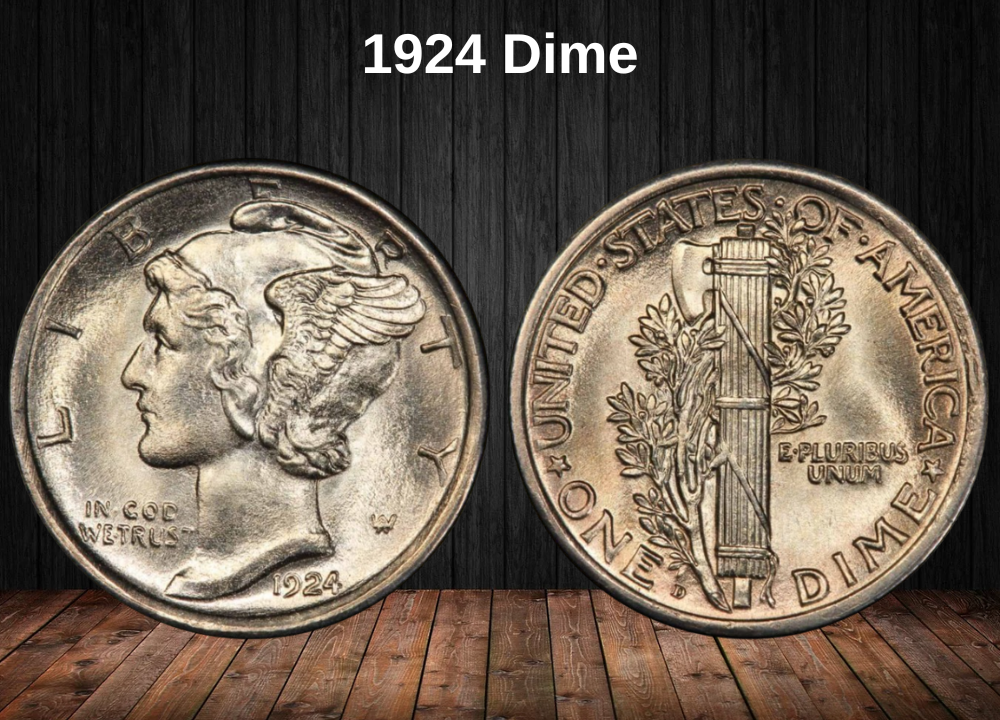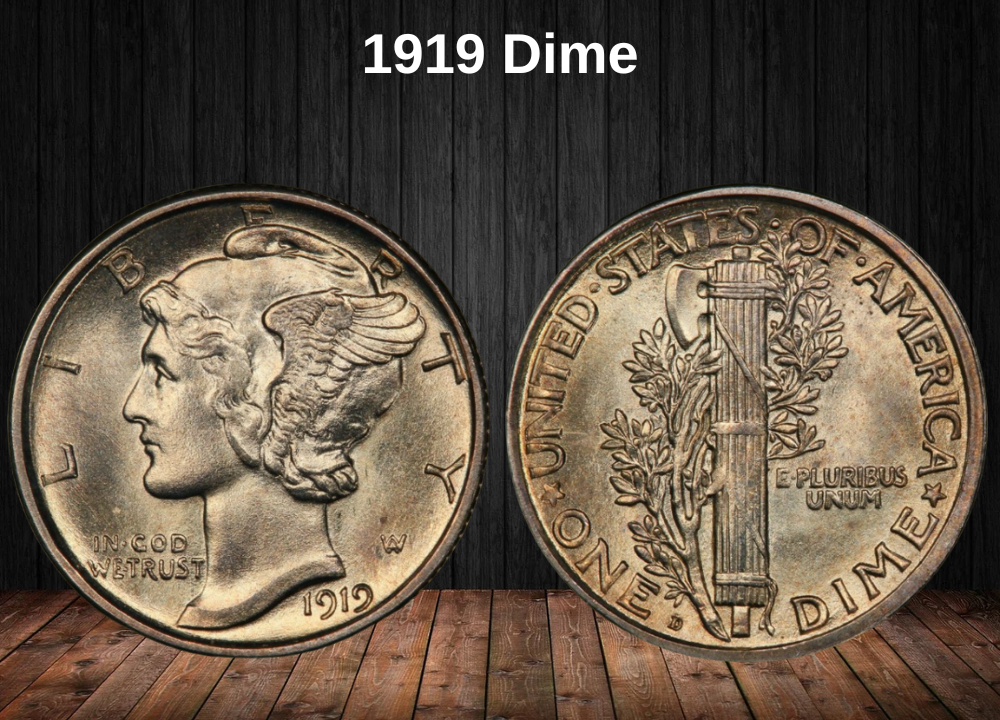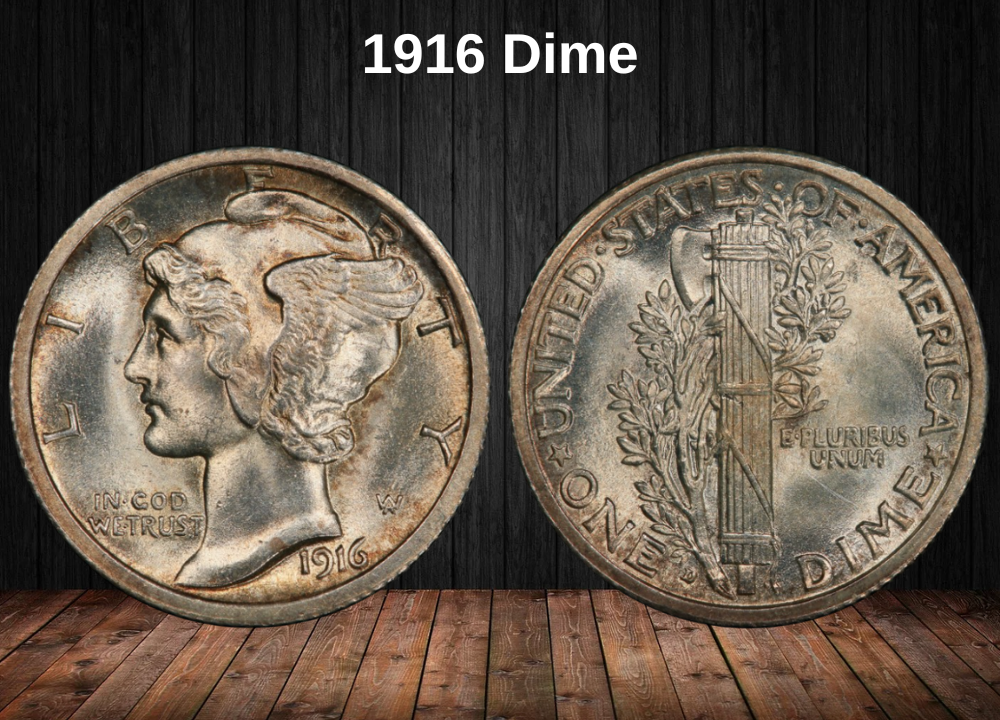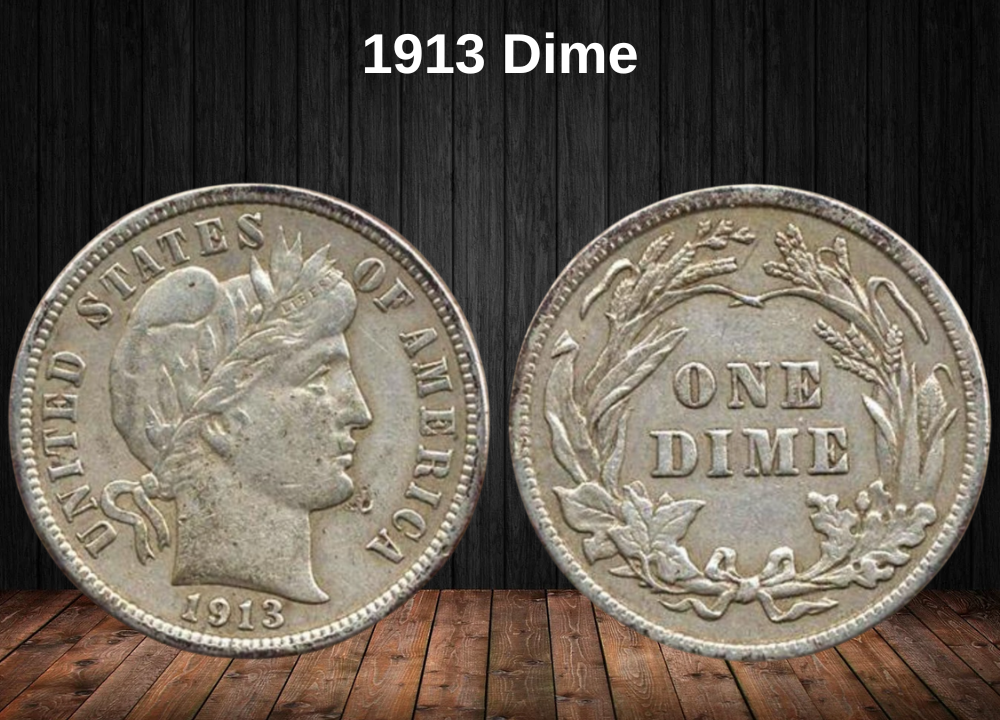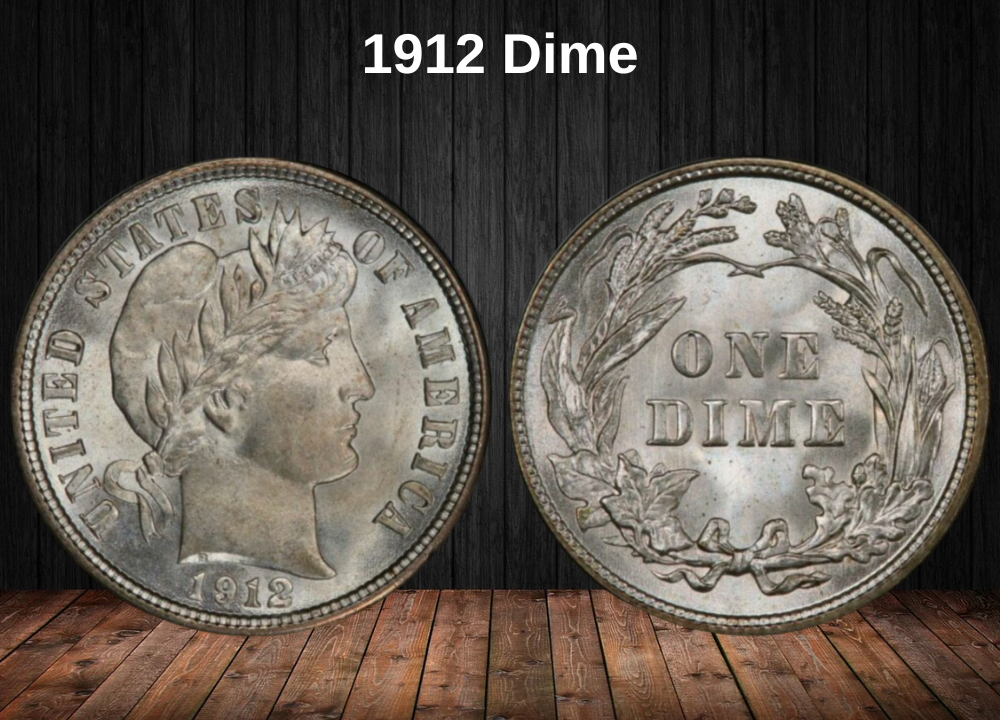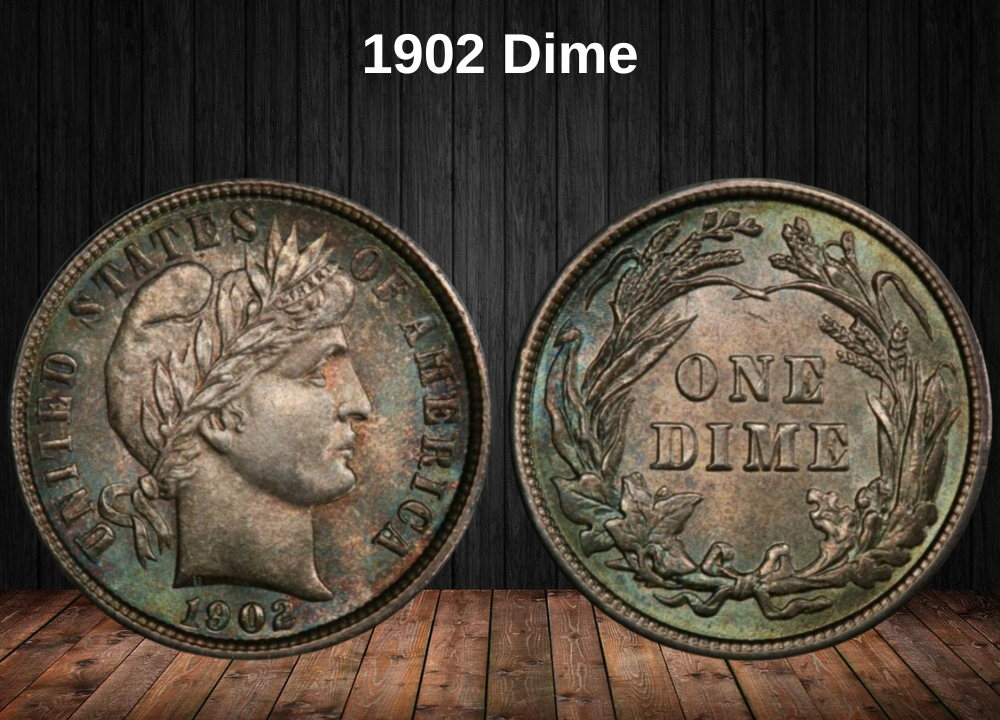The Roosevelt dime series, first introduced in 1946, has been struck continuously for nearly 80 years. Over this long history, billions of dimes have entered circulation, with varying compositions, mint marks, and finishes.
The 1967 dime belongs to the clad coinage era that began in 1965, when silver was permanently removed from the denomination. While most circulated examples remain extremely common and inexpensive, certain high-grade Mint State pieces and error coins from this year can carry significant value.
1967 Dime Value Chart
| Condition | Value (No Mint Mark) |
|---|---|
| MS60 | $2 |
| MS63 | $4 |
| MS65 | $8 |
| MS67 | $75–$150+ |
Note: Like 1965 and 1966, all 1967 dimes carry no mint mark, as the Mint temporarily suspended mintmarks from 1965–1967 to discourage hoarding during the silver-to-clad transition.
History of the 1967 Roosevelt Dime
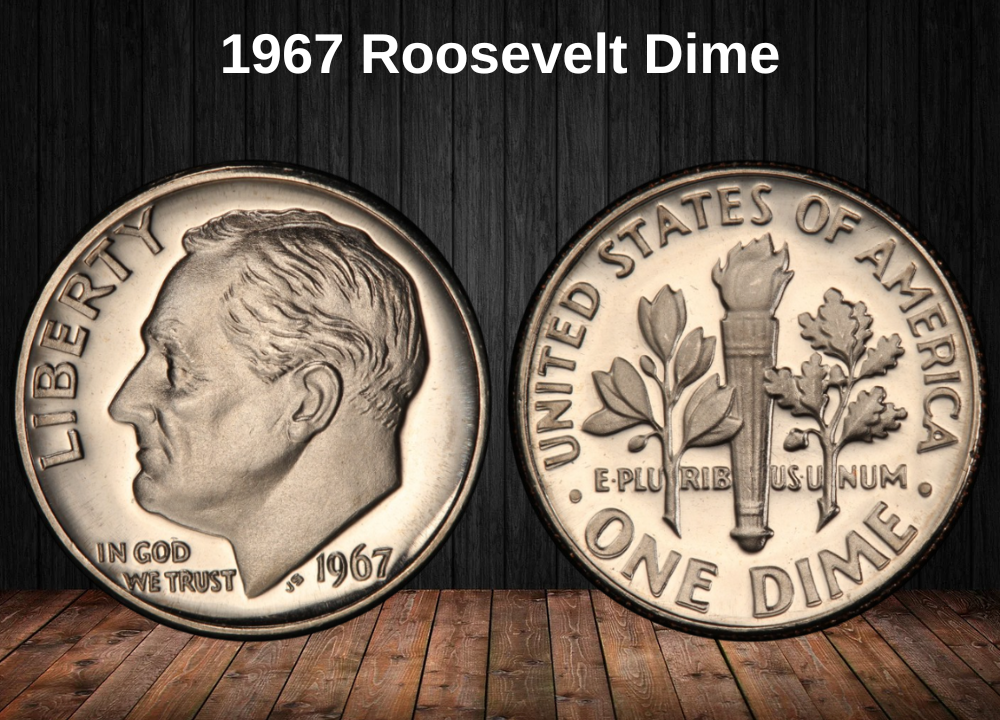
The Roosevelt dime was first introduced in 1946, honoring Franklin Delano Roosevelt, the 32nd President of the United States. Roosevelt’s portrait replaced the much-loved Mercury dime (Winged Liberty Head), and the U.S. Mint faced the challenge of creating a design that would be equally respectful and enduring.
By 1967, the Roosevelt dime design—created by Chief Engraver John R. Sinnock—remained virtually unchanged. What had shifted dramatically, however, was the composition.
1967 Mintages
| Location | Variety | Mintage |
|---|---|---|
| Philadelphia | 1967 No Mint Mark Dime | 2,244,007,320 |
| Philadelphia | 1967 SMS (Special Mint Set) | 1,863,344 |
| Total | 2,245,870,664 |
This staggering production ensured that 1967 dimes remained abundant in circulation. Even today, they are still frequently found in pocket change across the United States.
From Silver to Clad
Between 1946 and 1964, Roosevelt dimes were struck in 90% silver. However, rising silver prices and widespread hoarding in the early 1960s caused severe coin shortages. Collectors and the general public alike began pulling silver dimes, quarters, and half dollars out of circulation, further straining the nation’s coin supply.
To address this crisis, Congress passed the Coinage Act of 1965, which eliminated silver from the dime and quarter and reduced the silver content in the half dollar. Starting in 1965, dimes were struck in copper-nickel clad composition:
- Core: Pure copper
- Outer layers: Copper-nickel alloy (75% copper, 25% nickel)
- Overall content: 91.67% copper, 8.33% nickel
The clad dime preserved the appearance of silver but was significantly cheaper to produce, ensuring that coins would remain in circulation rather than in private hoards.
Proofs Replaced by SMS
Another important change was the temporary elimination of proof sets between 1965 and 1967. Instead, the Mint issued Special Mint Sets (SMS), offering collectors higher-quality coins than circulation strikes but at a lower cost than traditional proofs.
In 1967, just under 1.9 million SMS dimes were struck. These coins are identifiable by their satin-like surfaces and sharper strikes, with some examples displaying attractive Cameo and Deep Cameo contrasts, which are particularly prized today.
Features of the 1967 Roosevelt Dime
Both the obverse and reverse of the Roosevelt dime were designed by Chief Engraver John R. Sinnock, whose work has endured since 1946. The 1967 issue, like all clad Roosevelt dimes, carries the same classic design, intended to symbolize the values of liberty, strength, and unity in America.
Obverse Design
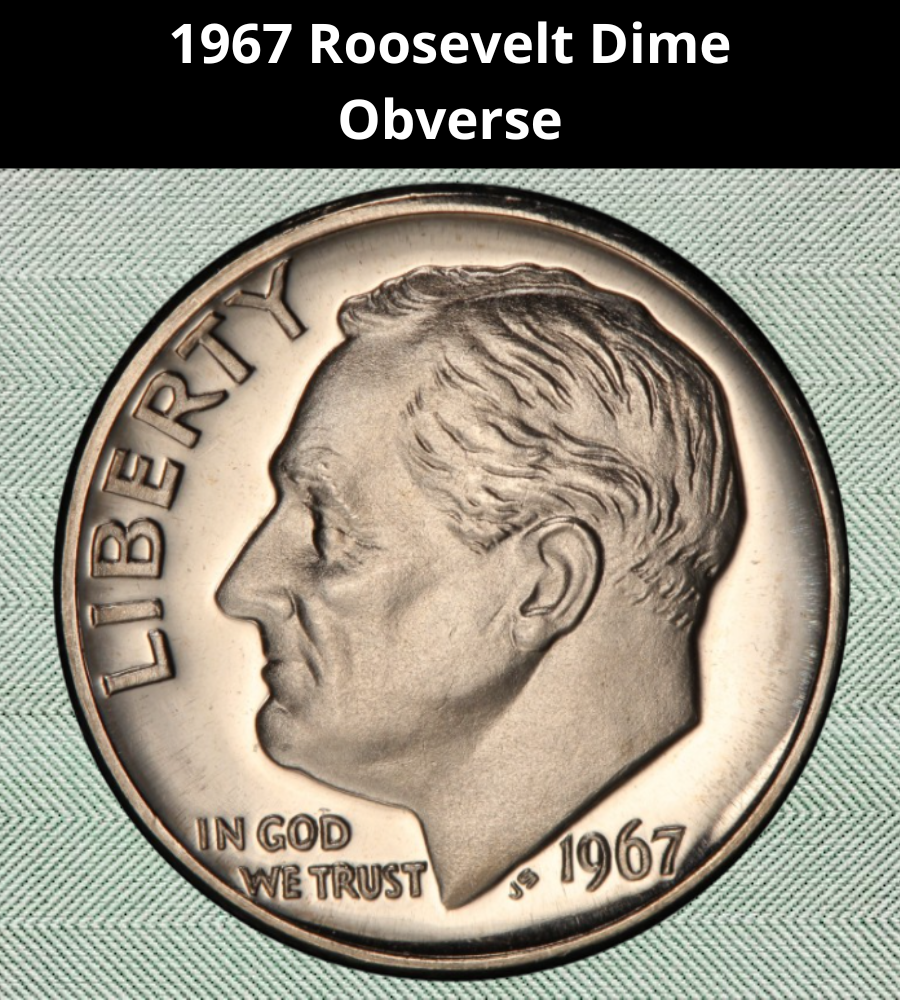
The obverse of the 1967 dime features a left-facing portrait of Franklin Delano Roosevelt, the 32nd President of the United States (1933–1945).
- LIBERTY is inscribed to the left of Roosevelt’s profile.
- The motto IN GOD WE TRUST is arranged in two lines beneath the chin.
- The date 1967 appears on the right side, alongside the designer’s initials JS.
- No mintmark is present, as all dimes struck between 1965–1967 were issued without mintmarks to discourage hoarding.
The proportions were carefully adjusted so Roosevelt’s bust appears prominent within the small 17.9 mm coin diameter, creating balance between portrait and inscriptions.
Reverse Design
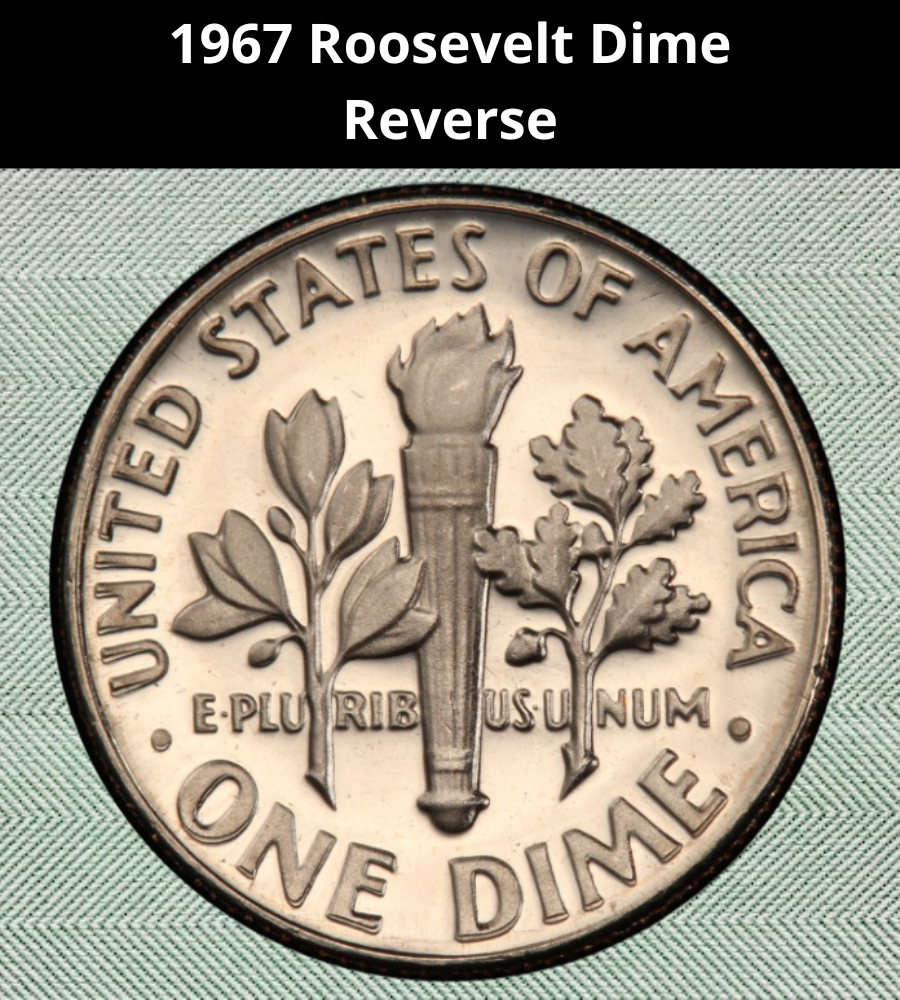
The reverse is rich with symbolism and remains one of the most recognizable designs in U.S. coinage:
- A central torch, representing liberty.
- An olive branch to the left, symbolizing peace.
- An oak branch to the right, representing strength and independence.
- The legend UNITED STATES OF AMERICA arcs along the top rim.
- The denomination ONE DIME anchors the bottom.
- The national motto E • PLURIBUS • UNUM runs across the lower field, cleverly divided by the torch and branches.
Though simple in execution, this design captures the dual essence of America’s pursuit of peace and strength under liberty.
Technical Specifications of the 1967 Dime
| Feature | Details |
|---|---|
| Face Value | Ten Cents (0.10 USD) |
| Composition | 91.67% copper (pure copper core), clad with 75% copper / 25% nickel |
| Weight | 2.268 g (0.080 oz) |
| Diameter | 17.91 mm (0.705 in) |
| Thickness | 1.35 mm (0.053 in) |
| Shape | Round |
| Edge | Reeded (118 reeds) |
1967 Dime Grading
| # | Grade |
|---|---|
| 1 | Basal State-1 |
| 2 | Fair |
| 3 | Very Fair |
| 4, 5, 6 | Good |
| 7, 8, 10 | Very Good |
| 12, 15 | Fine |
| 20, 30 | Very Fine |
| 40 | Extremely Fine |
| 50 | About Uncirculated |
| 60 | Mint State |
| 65 | Mint State |
| 70 | Mint State |
1967 Roosevelt Dime Value Guides
The Philadelphia Mint was the only facility to strike Roosevelt dimes in 1967, producing a staggering 2,245,870,664 coins. The vast majority were regular circulation strikes, while fewer than two million were prepared as part of the Special Mint Set (SMS) for collectors.
Although most 1967 dimes remain extremely common and are worth only face value, well-preserved Mint State examples, Full Bands varieties, and SMS dimes with Cameo or Deep Cameo contrast can bring significantly higher premiums.
1967 No Mint Mark Dime Value
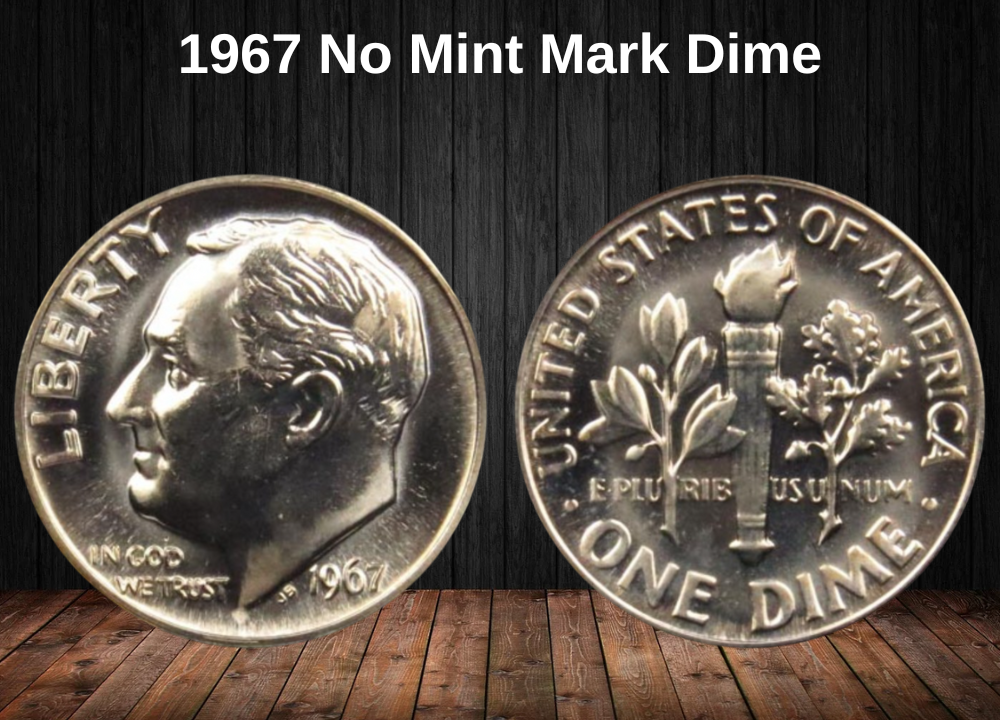
All 2,244,007,320 circulation strikes of 1967 dimes were issued without a mintmark, since mintmarks were suspended from 1965–1967.
- Circulated examples: Face value (10¢)
- MS65: $8
- MS66: $15
- MS67: $30
- MS68: ~$400
- MS69: Rare, ~$500 (recorded sale on eBay in 2023)
👉 Auction highlight: A 1967 MS69 dime sold for $500 on eBay in 2023.
1967 No Mint Mark Dime with Full Bands Value

The Full Bands (FB) designation indicates that the horizontal bands on the torch are sharply struck and fully separated, a feature that is scarcer in 1967 due to inconsistent striking quality.
- MS66 FB: ~$55
- MS67 FB: ~$250
- MS68 FB: $1,800+ (rare)
👉 Auction highlight: A 1967 MS68 FB dime realized $1,440 at auction on April 26, 2020.
1967 SMS Dime Value
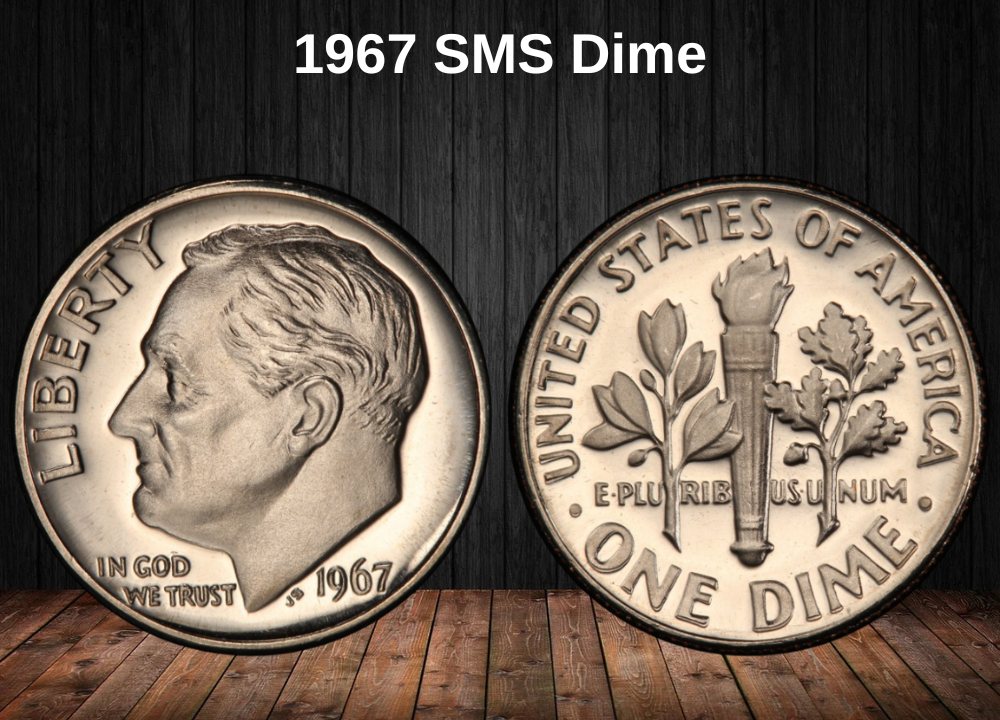
The Mint also struck 1,863,344 Special Mint Set dimes, intended for collectors. SMS coins are higher in quality than circulation strikes, with sharper details and smoother surfaces, though generally affordable in lower grades.
Standard SMS Values
- SP63: $5
- SP64: $6
- SP65: $8
- SP66: $10
- SP67: $14
- SP68: $26
- SP69: ~$675
👉 Auction highlight: A 1967 SMS dime graded SP69 sold for $339 in 2005.
SMS Cameo (CAM) Values
SMS coins with frosted devices and mirror-like fields are highly collectible.
- SP63 CAM: $12
- SP64 CAM: $17
- SP65 CAM: $22
- SP66 CAM: $30
- SP67 CAM: $35
- SP68 CAM: $165
- SP69 CAM: ~$2,750
👉 Auction highlight: A 1967 SP69 CAM dime sold for $2,300 in 2010.
SMS Deep Cameo (DCAM) Values
The most desirable SMS dimes are those with Deep Cameo (DCAM) contrast, showing heavy frost against deep mirrored fields.
- SP66 DCAM: $160
- SP67 DCAM: $500–$800
- SP68 DCAM: ~$1,500
- SP69 DCAM: ~$13,750
👉 Auction highlight: The record for the year belongs to a 1967 SP68 DCAM dime, which sold for $9,988 at Heritage Auctions on January 8, 2014.
Rare 1967 Dime Error List
Even though the 1967 Roosevelt dime is common in circulation, certain minting errors make some examples highly collectible and surprisingly valuable. Below are the most notable and desirable 1967 dime errors:
Doubled Die Obverse (DDO)
This error occurs when the die itself was engraved twice, creating a visible doubling on letters, numbers, or parts of Roosevelt’s portrait.
- Typical value: $30–$60
- Notable sale: One AU example sold for $600 in 2019.
Die Adjustment Strike

During press calibration, coins were occasionally struck with insufficient pressure, producing weak or “ghost-like” designs.
- Typical value: $100–$150
Missing Obverse Clad Layer
Some 1967 clad dimes were struck without their nickel outer layer on the obverse, leaving the copper core exposed. These errors often resemble a penny.
- Typical value: $60–$150
Struck 50% Off-Center
When the planchet was not properly seated in the press, only part of the design was struck.
- Collectible range: $30–$100
- Premium examples: 50%–55% off-center errors that still show the date.
Clipped Planchet
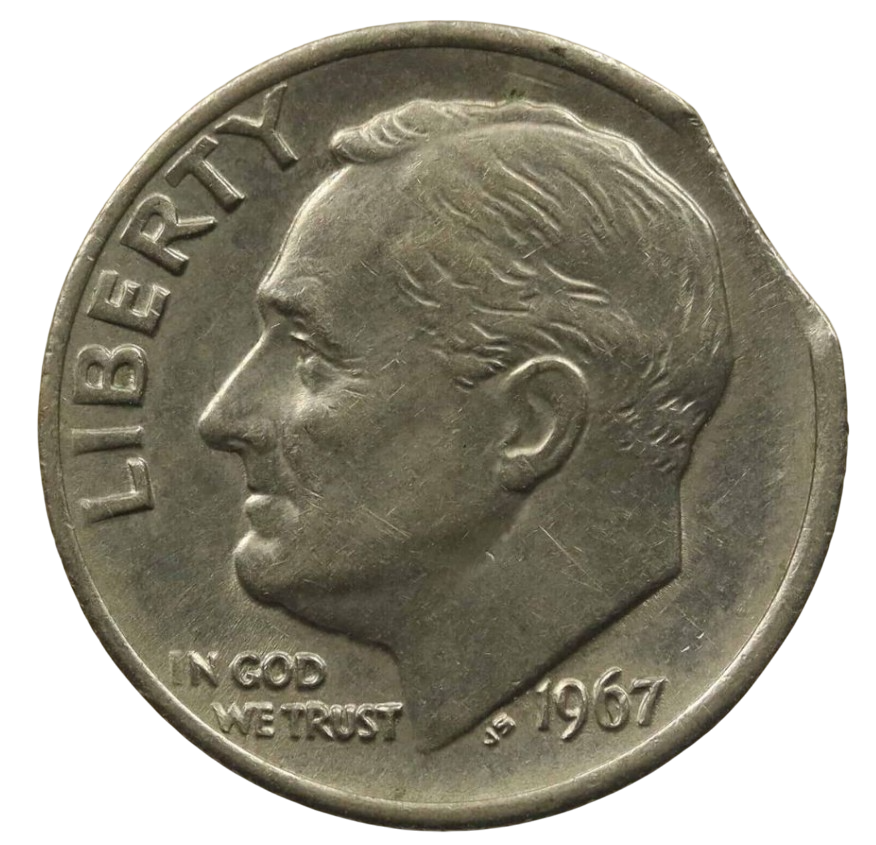
These dimes display an elliptical or curved missing section on the edge, caused by misfed blank planchets.
- Typical value: $35–$40 (Mint State)
Blank Planchet
Occasionally, unstruck planchets escaped the mint without ever receiving a design.
- Typical value: $2–$5
- Less collectible due to lack of detail, but still an interesting error.
Broad Strike
If the collar die (which shapes the edge) was missing or damaged, coins spread outward during striking, appearing wider with stretched lettering.
- Typical value: $5–$10
Where to Sell Your Dime Coin?
Now that you know the value of your dime, the next step is deciding where to sell it. There are several trusted options—both online and in person—that can help you get the best price depending on your coin’s rarity and condition.
To see the full list of recommended places, along with their advantages and disadvantages, check our complete guide on where to sell your dime coins.
FAQ about the 1967 Roosevelt Dime
What makes the 1967 Roosevelt dime historically significant?
The 1967 dime belongs to the first years when the U.S. Mint completely stopped producing 90% silver coins. Instead, it was made from a copper-nickel clad composition, a response to the rising silver prices and widespread hoarding of coins during the 1960s. Its role marks a turning point in modern U.S. coinage.
Why does the 1967 Roosevelt dime have no mint mark?
From 1965 to 1967, the Mint removed all mint marks to discourage hoarding and speculation by collectors. Therefore, all 1967 dimes appear without a mint mark, even though they were produced in Philadelphia. Mint marks only returned in 1968.
How many 1967 Roosevelt dimes were minted?
The Philadelphia Mint struck 2,244,007,320 circulation strikes and 1,863,344 Special Mint Set (SMS) dimes, for a total of 2,245,870,664 coins. This huge mintage explains why most 1967 dimes remain common and affordable today.
Are 1967 Roosevelt dimes made of silver?
No. Unlike pre-1965 dimes that contained 90% silver, the 1967 dime is composed of 91.67% copper and 8.33% nickel, with a pure copper core and a copper-nickel outer layer. This change was made to reduce costs and preserve silver for other uses.
What is the value of a 1967 Roosevelt dime today?
Circulated examples are typically worth only their face value of ten cents. However:
- MS 65: around $8
- MS 66: about $15
- MS 67: $30 or more
High-end examples in MS 68 or MS 69 can fetch hundreds of dollars, especially with Full Bands details.
What are “Full Bands” on the 1967 dime and why are they valuable?
Full Bands (FB) refers to the sharply struck horizontal bands across the torch on the reverse. Collectors prize these as they prove excellent striking quality. A 1967 dime graded MS 67 FB can bring $250 or more, and MS 68 FB examples can exceed $1,800 at auction.
What are the rarest 1967 dime errors?
Some highly collectible 1967 dime errors include:
- Doubled Die Obverse (up to $600 in high grade)
- Missing clad layer (looks like a copper penny, $60–$150)
- Off-center strikes (with visible date, $30–$100)
- Special Mint Set CAM or DCAM coins (in MS 69, can exceed $10,000)
Are Special Mint Set (SMS) dimes from 1967 valuable?
Yes, though most are modestly priced. Standard SMS coins range from $5 to $26 in grades MS 63–MS 68. However, cameo (CAM) and deep cameo (DCAM) strikes are much rarer and can reach thousands of dollars, with one selling for nearly $14,000.


